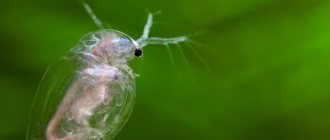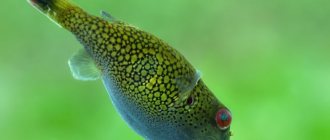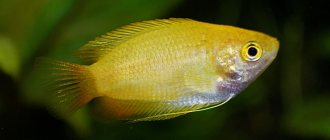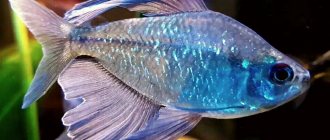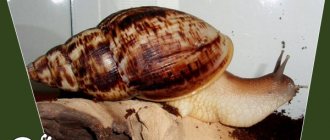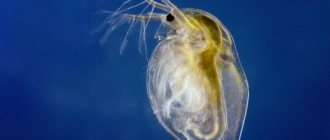Crustaceans (Crustacea) are a subphylum of arthropods that include the following best-known animals: crabs, lobsters, shrimp, krill, crayfish, woodlice, and barnacles. To date, about 70,000 species have been discovered. Crustaceans developed in the sea and to this day are the only subtype of arthropods for which the aquatic environment is the main one. There are several terrestrial species of crustaceans (eg, land crabs, terrestrial hermit crabs, and wood lice), as well as several parasitic groups (eg, whale lice and fish lice). Most crustaceans lead a mobile lifestyle, but some groups, for example, barnacles, are sedentary.
Class crustaceans - general characteristics
Various systems provide for the separation of crustaceans into a separate phylum or the assignment of a subphylum of invertebrate animals to the class Crustacea. Crayfish are classified as arthropods, invertebrates.
Currently, more than 73 thousand individual species have been studied and described. The list of fossils contains more than 5 thousand species. Crustaceans are distinguished by a variety of external shapes and sizes, and way of life.
Similar characteristic:
- Breathing through gills.
- The head and thoracic regions are combined into the cephalothorax.
- For touch, balance and smell, two pairs of antennae are used. The oral limbs are represented by 3 pairs of antennae, capturing and crushing food.
- Each individual thoracic segment has 1 pair of legs.
- Higher crayfish have special swimming limbs on their abdomen.
- All crayfish are characterized by periodic molting.
- Mostly dioecious.
How many pairs of legs do crustaceans have? This varies for individual representatives. The number of limbs depends on the number of body segments. Crabs have 19 pairs of limbs, crayfish have 10.
The sizes of crayfish range from 1 mm to 1.5 - 2 m. The largest lives in the Japanese waters of the Pacific Ocean. The weight of the giant Japanese crab reaches 40 kg. The body length is about 80 cm. This ocean crayfish lives at a depth of 200 m.
Features and characteristic features of the class
The division into lower and higher representatives of the class is based on differences in structure. Lower crustaceans include cyclops, daphnia and woodlice. They are characterized by:
- small body size;
- variable number of body segments in each species;
- absence of limbs on the abdominal part of the body;
- fork on the last segment;
- a transparent chitinous shell through which the organs are visible.
Higher Crustaceans include crabs, crayfish, and shrimp. They are characterized by:
- large sizes compared to lower class types;
- division of the body into a constant number of segments;
- swimming legs on the abdominal part of the body;
- outer thick chitinous skeleton impregnated with calcium carbonates.
Most animals are free-living, but there are also sessile, attached and parasitic individuals. They mainly feed on algae, but some representatives are predators and carrion eaters.
External structure of crayfish
Crayfish is a typical representative of crustaceans. Habitat: fresh water. The body length usually does not exceed 20 cm. The body has a segmental division.
The external structure and features are briefly presented in the table.
| Body parts | Function |
| Long mustache | Perceive sensations from touch |
| Short antennas | For the sense of smell |
| Eyes | Visual function |
| Cephalothorax | Includes 8 segments with a similar number of pairs of limbs. The jaws consist of 3 pairs and are necessary for capturing food and directing it into the mouth. Claws – 1 pair of limbs that perform defense and attack functions. Walking legs of 4 pairs are used for movement. Gill chambers are necessary for respiration. |
| Abdomen | Swimming (5 pairs of small limbs). |
| Tail fin | Swimming. |
Description
The body of crustaceans is divided into the following sections: head, thoracic and abdominal. In some species, the head and thorax are fused together (cephalothorax). Crustaceans have an external skeleton (exoskeleton). The cuticle (outer layer) is often reinforced with calcium carbonate, which provides additional structural support (especially important for larger species).
Many species of crustaceans have five pairs of appendages on the head (these include: two pairs of antennae (antennae), a pair of lower jaws (maxilla) and a pair of upper jaws (mandibles, or mandibles)). Compound eyes are located at the end of the stalks. The thorax contains several pairs of pereopods (walking legs), and the segmented abdomen contains pleopods (abdominal legs). The posterior end of the body of crustaceans is called the telson. Large species of crustaceans breathe using gills. Small species use the surface of the body to carry out gas exchange.
Circulatory system
The functions of blood are performed by hemolymph, a colorless fluid. The movement of fluid is carried out with the help of the heart, located in the thoracic region of the body under a special protective shield.
The blood circulation circuit is not closed. Through hemolymph, the body is saturated with minerals and oxygen molecules. Carbon dioxide is removed through the gills. Oxygen bubbles from the water enter the hemolymph using the gills.
Nutrition
In the process of evolution, crustaceans have acquired a wide range of feeding methods. Some species are filter feeders, extracting plankton from the water. Other species, especially large ones, are active predators that capture and tear apart their prey using powerful appendages. There are also scavengers, especially among small species, feeding on the decaying remains of other organisms.
Digestive system
The scheme of the digestive system of crayfish is typical for all arthropods. It is tubular in shape and consists of the oral cavity, pharynx, esophagus, stomach, and intestines.
Food is subjected to grinding by chitinous plates in the first section of the stomach. The process is called chewing. In the second, with the help of fleecy plates, food is filtered and transported to the intestines.
Food is digested and absorbed by the digestive gland. Waste products exit through the anus, located in the fin area.
Crayfish feed on plant and animal foods.
Internal organization
The internal structure of crustaceans perfectly illustrates the structure of crayfish. There are no significant differences between representatives of this class.
Digestive tract
The digestive system of crayfish consists of anterior, posterior and middle sections. The first consists of the mouth, jaws, esophagus, and the chewing stomach (designed for grinding food). The middle section consists of the following organs:
- midgut with ducts from the liver;
- filter stomach - the inside of the organ is covered with chitinous hairs that allow only finely ground food to pass through.
The middle section of the intestine smoothly passes into the hind intestine and ends with the anus. In the cancer body, the liver functions as a digestive gland. It secretes special enzymes that break down not only fats, but also proteins and carbohydrates. All nutrients are absorbed in the middle intestine.
Respiratory and excretory organs
Since crayfish live in bodies of water, the animals have characteristic respiratory organs - gills. They are located in the back area and are covered with a chitinous shield. Gills are projections on the limbs used for locomotion, as well as on the jaws. Oxygen dissolved in water enters the bloodstream through the gills and is distributed to all tissues of the body. Carbon dioxide, in turn, is released into the environment. The animal cannot stay on land for a long time. As soon as the gills dry out, the individual is unable to breathe and dies.
The animal exists in the water element and does not need to conserve liquid. That is why, unlike land arthropods, crayfish do not have Malpighian vessels. The excretory organs of this creature are represented by green glands. They are located at the base of the long mustache. Each excretory organ consists of two elements:
- green gland;
- Bladder.
It’s worth finding out in a little more detail what role they play. At the base of the green gland there is a coelomic sac, which collects harmful waste products from the entire body. They enter the bladder through the glandular canal and are then expelled through the excretory pore.
Nervous and circulatory systems
The nervous system of the individual consists of the suprapharyngeal node, which acts as the brain, the peripharyngeal ring, the subpharyngeal node and the ventral nerve chain. The subpharyngeal and suprapharyngeal nodes are connected by a large number of nerve fibers, which form the subpharyngeal ring.
Like all arthropods, crayfish have a lacunar or open circulatory system. It should be said right away that in cancer, instead of blood, a special liquid circulates through the vessels - hemolymph , which has a bluish tint. From the arteries it simply pours into the internal cavity of the body and washes all organs and tissues. Then the hemolymph again enters the vessels. The cardiac muscle of cancer has the shape of a pentagon and is surrounded by the pericardium - the pericardial sac.
The heart is pierced by slits called ostia. During muscle contraction, they close and hemolymph moves into the arteries. When the heart relaxes, the ostia open to allow blood to return to the organ.
Features of reproduction and significance in nature
Cancers are dioecious creatures. External distinctive features between males and females are present, but rather weakly expressed. Females are slightly larger than males. In addition, they have a wider abdomen. In females, the first pair of abdominal limbs is absent. The fusion of eggs with sperm occurs inside the female’s body.
During the mating season, the male introduces a spermatophore, a sac containing seminal fluid, into the female genitals. After two or three weeks the female spawns her eggs . At the same time, it dissolves the spermatophore membrane, which results in the fusion of male and female germ cells.
Many types of crustaceans are consumed by humans. Small representatives of this class serve as food for various animals. Crayfish occupy an important place in the ecology of the planet's biosphere. They eat the bodies of dead animals, thereby purifying the pond. If you have to write a report on a topic, then you should include pictures with captions.
Respiratory system
The respiratory system consists of paired gills. They are similar in shape to leaves and threads. The gills are located on the cephalothorax in special cavities protected by the dorsal shield.
Gill outgrowths are attached to the bases of walking legs and jaws. Oxygen enters along with a stream of water directed from behind. The dorsal shield can protect the gills from drying out outside the aquatic environment for a long time.
Veils
The structure of the crayfish is also determined by its cover. It is represented by chitin. In terms of its chemical composition, this substance is a nitrogen-containing polysaccharide. It is very hard and tough and does not dissolve in water.
Chitin forms the exoskeleton of crustaceans. Since it is not capable of stretching, the growth of crayfish is invariably accompanied by the process of molting. The old hard chitinous cover bursts, and the new one has completely different physical properties. It is soft and colorless. As chitin grows, it begins to become saturated with lime and also becomes hard. This can happen up to eight times during the first year of life. The cancer does not grow until the next molt.
This cover forms the outer or exoskeleton. It reliably protects internal organs from mechanical damage, and the animal itself from enemies. Especially hard chitin on the claws. With the help of these limbs, cancer can even cut the shell of bivalve mollusks.
Sense organs
The tactile and olfactory organs are long antennae. The organs responsible for balance and hearing are located at the bottom of the short antennae.
The organs of vision are represented by convex eyes of a complex structure. The stalks provide eye mobility and increased visibility. The whole image is made up of disparate pictures perceived by several eyes. Such a scheme is called mosaic.
Body cavity
The internal structure of crayfish is determined by embryonic development. During this period, animals develop a secondary body cavity. But as it develops, it is destroyed, mixing with the remains of the primary one. This is how a mixed body cavity is formed, characteristic of all crustaceans. Its characteristic feature is the presence of a fatty body. This is loose connective tissue that fills the spaces between organs.
Reproduction and development
Externally, female and male crayfish have some differences. In males, the cephalothorax is wider than the abdomen. The female reproductive system consists of ovaries and a pair of oviducts. Fertilization of the female occurs through the introduction of the male's seminal fluid into the genitals.
In early spring, the female spawns eggs. They are attached to the abdominal legs, where their development occurs. Young individuals appear in the first days of summer and live on the abdomen of the female for several days. After 12 days, young crayfish begin their independent existence.
Lifestyle Features
Crayfish is found exclusively in fresh water bodies, at a depth of 3 meters or more. For them, a comfortable water temperature ranges from 16 to 23 degrees Celsius. Crayfish are nocturnal, preferring to rest during the day under driftwood at the bottom of the reservoir.
Crayfish move mainly with the help of walking legs, but in case of danger or severe fright, they can swim in the water column backwards with the help of sharp strokes of their tail. https://youtube.com/watch?v=zkAhKCTb8PY
Nutrition of Astacus astacus L
Crayfish are almost omnivorous. They eat quite a lot of plant foods, for example:
- seaweed;
- fallen leaves;
- coastal grass;
- cane;
- reed rhizome;
- water lilies;
- and so on.
Crayfish especially love to eat nettles. In addition to plant foods, they can eat worms, other small crustaceans, insect larvae, tadpoles, snails, and small fish. Moreover, animal food makes up only 10% of the total volume of the consumed diet.
Crayfish claws help in capturing and crushing food.
Females feed less frequently than males. It is enough for them to replenish their strength once every three or four days. Males need to eat more often, once or twice a day.
Life cycle
Reproduction in crayfish occurs in the fall. The female attaches the inseminated eggs to the abdomen, thereby showing concern for the offspring. She can produce about 600 eggs at a time and hatch throughout the fall and winter.
The crustaceans hatch from the eggs in the summer. The external and internal structure of crayfish in an adult and larva does not differ much. This is the so-called direct type of development. For the first two weeks of life, the crustaceans remain on the female’s abdomen, after which they begin to feed and move independently.
The chitinous cover of Astacus astacus L. cannot grow, so the adult changes it once a year. Young crayfish shed their shell more often. During molting, when the arthropod's body is soft and vulnerable, they huddle in a safe place and wait for the new chitinous shell to become hard. This occurs due to the impregnation of the covers with lime.
https://youtube.com/watch?v=fITr3Ngbh7Y
Life cycle of crustaceans
Crustaceans have a high life expectancy. The variety of development cycles of crayfish is represented by simple and indirect forms. The complex life cycle includes larval stages.
Indirect forms of development are found in the following representatives of crustaceans:
- copepods – Cyclops, Diaptomus, etc.;
- Cladocerans - Daphnia;
- higher crayfish - lobsters, lobsters.
The endocrine system has a direct influence on the life cycle of crustaceans. With the help of special hormones, puberty, molting, and the formation of adults from larvae are regulated.
Classification
The phylogenetic connections of individual groups of crustaceans have not been fully identified, but recent studies include insects as well, so perhaps soon, if the taxonomy is accepted, we will not consider the feature - 2 pairs of antennae - as distinctive for this group of arthropods. For now, let’s look at the classification, which not everyone considers correct either. According to it, crustaceans are divided into 6 classes:
- Branchiopods (Branchiopoda).
- Cephalocarida
- Remipedia.
- Maxillopoda.
- Higher crayfish (Malacostraca).
- Shellaceae (Ostracoda).
We will talk about representatives of these classes in separate article-lessons.
Lifestyle
Of all the variety of crustaceans, only wood lice preferred life on land to life in water. Different types of crustaceans have an individual lifestyle.
Shrimps, primitive crustaceans and branchiopods have given up their existence to the will of the current, which carries them in different directions. Such as sea acorns lead a sedentary lifestyle, never leaving the water.
Carp lice and other parasitic crustaceans live and feed at the expense of the host. Some crayfish lead an almost immobile lifestyle, attaching themselves to rocks, shells, whales and sharks.
Habitats
Most crustaceans live in the seas, where they are the predominant group of arthropods. Some taxa (crayfish, crabs, a number of shrimp, copepods and cladocerans, branchiopods, amphipods, etc.) independently populated fresh water bodies. Some representatives have mastered the land (woodlice, a number of crabs, for example, the palm thief, amphipods in the soil of tropical rainforests), but they have not adapted to life on it as well as spiders and insects. Only land woodlice are completely independent of open water.
Most crustaceans lead a free lifestyle, only a small number of their species have switched to parasitism (sea lice, carp lice, whale lice); their hosts are fish and aquatic invertebrates. Most are actively moving animals, but sea ducks, balanuses and sea acorns lead an attached lifestyle.
1. Arria Belli, CC BY 2.0 2. FR, CC BY-SA 3.0 3. Karelj, public domain 4. Drew Avery, CC BY 2.0 5. BesigedB~regular wikis, public domain
Practical significance of crustaceans
Various types of crayfish serve as food for marine and freshwater animals and fish. The food for larvae and fish are daphnia and cyclops, diaptomus and other representatives of lower crustaceans.
Certain types of crayfish help filter and clarify the surrounding water during digestion.
Large representatives of crustaceans are considered commercial animals. For example, lobsters and langoustines are widely consumed by humans. They have numerous beneficial properties - improve blood circulation, help lower blood pressure, strengthen the walls of blood vessels, and help restore the functions of the nervous system.
However, there is no difference between lobster and lobster. This is the same crustacean, called lobster in France, and lobster in English.
Some parasitic crustaceans cause harm to surrounding animals. The carp louse is a skin parasite of carp; the larvae of cyclops and cyclops are intermediate hosts of tapeworms.
The role of crustaceans in the planet’s ecosystem is high. Many species of crayfish are rare and endangered. Photos with the names of these animals are contained in the Red Book.
food chain
Crustaceans occupy a key place in the marine food chain and are among the most widespread animals on Earth. They feed on organisms such as phytoplankton, in turn crustaceans become food for larger animals such as fish, and some crustaceans such as crabs, lobsters and shrimp are very popular food for humans.
